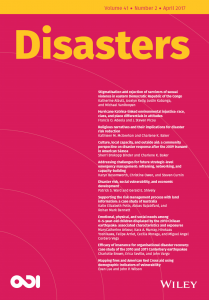Racial Identity & Text Message Surveying
Nikki Khanna’s Sociology Compass article, Multiracial Americans Racial Identity Choices and Implications for the Collection of Race Data, reviews the literature on multiracial identity with a critical eye towards the 2010 U.S. Census.
Racial identification is complex and difficult to measure because race itself is dynamic; a person’s racial identification may change—especially if the person has the ability to “pass,” or blend into the majority group even though they are, at least in par, a member of the minority group. For example, the actor Keanu Reeves is part Asian/Pacific Islander, yet he is ‘white enough’ looking to effectively portray white characters in mainstream movies. Likewise, President Barack Obama is of mixed race, but due to his dark skin he is not commonly identified as white.
In my opinion the largest flaw with racial identification research, which is suggested but not articulated in Khanna’s article, is the current mode of data collection. Paper and pencil surveys (the primary mode of administration for the U.S. Census) are most adept at measuring static items (such as a person’s height, their place of residence, and how many credits a student is taking) but lacks accuracy when trying to understand dynamic psychological attributes—such as racial identification.
Traditionally, dynamic and variable psychological traits have been measured via diary studies. As an undergraduate I remember having to keep a diary about “my experiences with children” as part of a psychology course. As a child of the Information Age, keeping a composition notebook of my interaction with children was like using a typewriter: I knew how to use the technology but it was so cumbersome that I did the bare minimum to get the requisite grade. There has to be a better way.
Then it hit me, “TXT!”

I propose a multiracial identification survey that is administered by cell phone text messages. The ideal population would be college students, and the collection frame would be anywhere from one week to a month.
Once a day (between 9 AM and 9 PM) participants would receive a racial identification survey text message: “On a scale of 1 to 7, how white do you feel? 1-Very, not-white 7-very white.” The participant would simply text back the appropriate response (e.g., ‘1’) and be on his or her way. Since respondents would be asked to respond in one numeral messages, it is unlikely that participants would use text slang (e.g., OMG or LOL) in their responses. This scenario could be repeated any where from once a week to a few times a day. It could be scaled from 30 respondents to 1,000 respondents. The researcher can randomize when the text message is sent out—eliminating the recall bias that hinders traditional survey methodology. And with minimal cost, he/she could modify the question to assess different racial identities “How Asian do you feel right now,” or “How Black do you feel right now?”
As with any mode of survey administration, there are bound to be limitations. To the author’s knowledge, no surveys have been administered via text message and as a result the response rate for this mode is unknown. Since undergraduate students are the target population and college can serve as a time for racial probing, the extent to which racial identification in college affects mid- and late- life adult racial identification must be taken into consideration. And, finally, this study should be compared to a traditional paper and pencil survey of racial identification in order to judge validity.
What do you think? Are text messages a feasible alternative to diary studies? And do they offer an advantage to current paper and pencil modes of administration? Does this spark any ideas?
Related Readings:
Khanna, Nikki. 2012. Multiracial Americans: Racial Identity Choices and Implications for the Collection of Race Data, Sociology Compass, 6. pp. 316 – 331.
Townsend, Leslie. 2005. The Status of Wireless Survey Solutions: the Emerging “Power of the Thumb.” Journal of Interactive Advertising, 6 (1). pp. 40-45.
Photo Credits:
Wikipedia, Texting.




